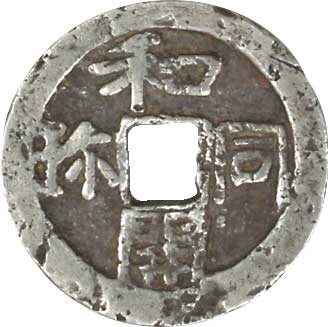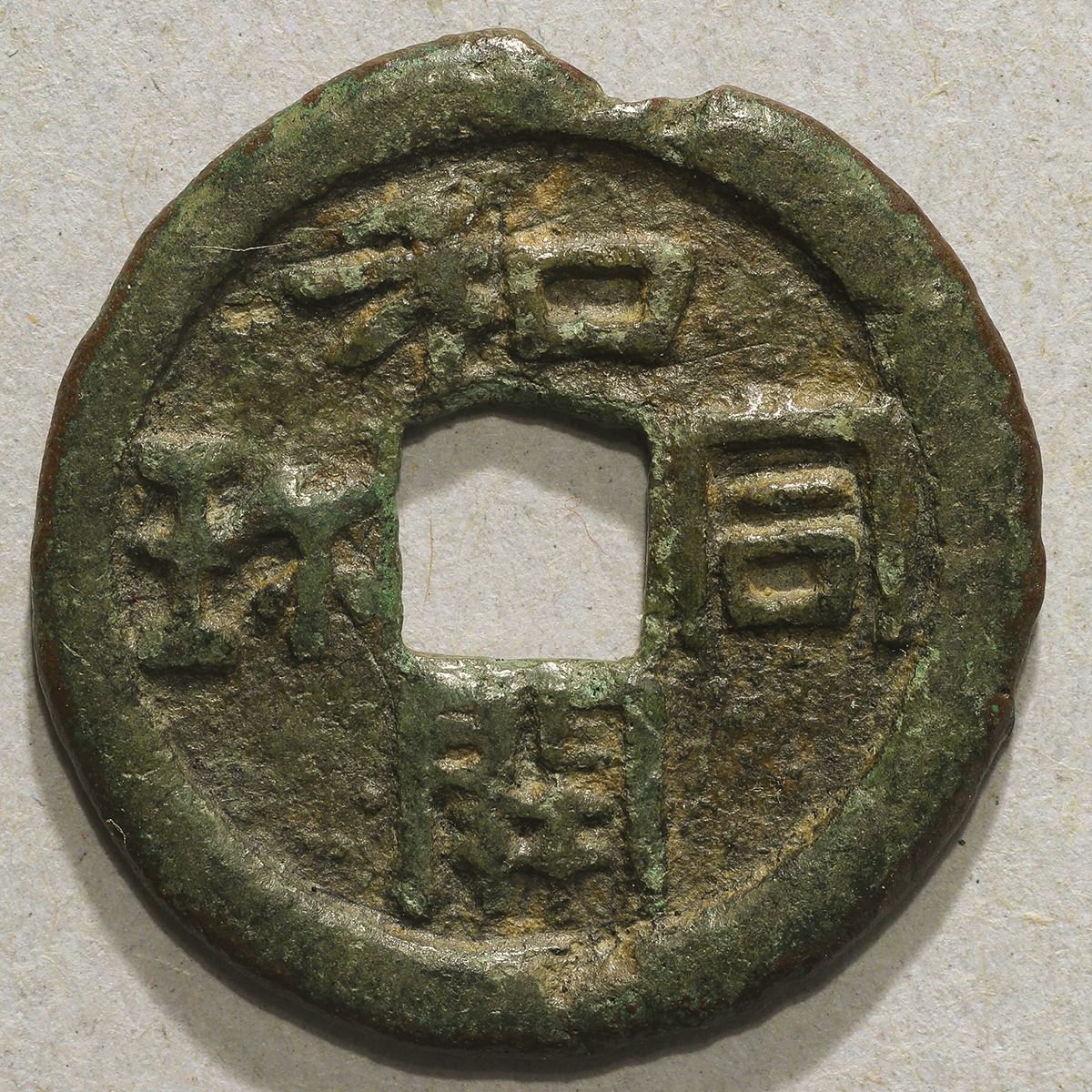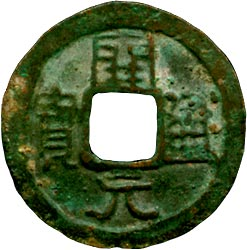


 (From left to right, top to bottom) (Figure 1) Silver Ko Wado Kaichin, (2) Copper Ko Wado Kaichin, (3) Copper Shin Wado Kaichin and (4) Japanese imitation of Chinese Kaiyuan Tongbao (called 島銭 or Shima-Sen).
Photos sourced with permission from AuctionWorld
(From left to right, top to bottom) (Figure 1) Silver Ko Wado Kaichin, (2) Copper Ko Wado Kaichin, (3) Copper Shin Wado Kaichin and (4) Japanese imitation of Chinese Kaiyuan Tongbao (called 島銭 or Shima-Sen).
Photos sourced with permission from AuctionWorld
First cast in 708, the Wado Kaichin is widely believed to be the very first Japanese coin. Wado Kaichin (和同開珎), inscribed clockwise on the obverse (see Figure 1), translates roughly to “First Japanese Copper Coin.” Interestingly, the design of the Wado Kaichin is based on a Chinese coin called the Kaiyuan Tongbao, or Kaigen Tsuho in Japanese. The Japanese government hired Chinese calligraphers to help design the Wado Kaichin, and because of this, the calligraphy on the Wado Kaichin is quite similar the Chinese Kaiyuan Tongbao (see Figure 4). Produced until 759, the Wado Kaichin exists as two major varieties distinguished by their quality. The first variety, often called “Ko Wado Kaichin” (old Wado Kaichin), was produced by Japanese workers from 708 to 720; the second variety, called “Shin Wado Kaichin” (new Wado Kaichin) was produced from 720 until 759 by hired Chinese workers. As the Chinese workers were more skilled than their Japanese counterparts, the ‘Shin” Wado Kaichin is of a much higher quality than the “Ko” Wado Kaichin. Another difference between the Wado Kaichin varieties is the metal from which they were cast; the “Ko” coins were produced in both silver and copper while the “Shin” coins were only produced in copper. Generally, the diameter of the Wado Kaichin in both varieties is 24.5mm. However, the weight of these coins varies significantly due to the nature of casting process. For example, the weight of the silver Wado Kaichin shown (Figures 1) is 6.7 grams whereas the weight of the copper Wado Kaichin depicted (Figure 2 and 3) is just 3.9 grams. Interestingly, when the Wado Kaichin was circulating in the 700s, it was commonly traded for rice and linen. One exchange rate created in 711 set one Wado Kaichin to be worth 10 liters of rice. Another exchange rate released in 712 stated that five coins could be used to buy 4.9 meters of linen. Produced for 51 years, the Wado Kaichin is widely believed to be the first coin to displace the conventional Japanese trading system.